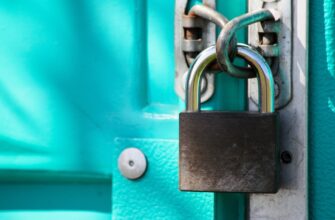Encrypting your account offline is a critical step in protecting sensitive data when you cannot access the internet. Whether you’re securing a personal account, a business account, or a device, offline encryption ensures your information remains private even without online connectivity. This guide provides a step-by-step process to encrypt your account offline, along with tools and frequently asked questions to help you understand the process.
### Why Encrypt Your Account Offline?
Offline encryption is essential for maintaining data security in environments where internet access is limited or unavailable. By encrypting your account, you prevent unauthorized access to your information, even if your device is lost or stolen. This method is particularly useful for storing sensitive data, such as passwords, financial records, or personal documents, in a secure, offline environment.
### Step-by-Step Guide to Encrypt Your Account Offline
1. **Backup Your Data**: Before encrypting your account, ensure all critical data is backed up to an external drive or cloud storage. This prevents data loss during the encryption process.
2. **Choose an Encryption Tool**: Select a reliable encryption tool that supports offline use. Popular options include VeraCrypt, BitLocker, and GPG (GNU Privacy Guard). These tools allow you to create encrypted containers or volumes for your data.
3. **Create an Encrypted Container**: Use the chosen tool to generate an encrypted container. For example, in VeraCrypt, you can create a virtual disk that is encrypted and stored on a physical drive. This container acts as a secure vault for your data.
4. **Transfer Data to the Encrypted Container**: Copy your sensitive data into the encrypted container. Ensure that the data is not accessible without the encryption key.
5. **Secure the Encrypted Container**: Store the encrypted container in a secure location, such as a physical safe or a trusted external drive. Avoid leaving it in easily accessible places.
6. **Set Up a Strong Password**: Use a strong, unique password to protect the encryption key. Avoid using easily guessable passwords or reusing passwords from other accounts.
7. **Test the Encryption Process**: Verify that the encryption works by attempting to access the container without the password. This ensures that your data is securely encrypted and accessible only with the correct key.
### Tools and Methods for Offline Encryption
– **VeraCrypt**: A free, open-source tool that allows you to create encrypted containers. It supports various encryption algorithms and is ideal for securing data on USB drives or external storage.
– **BitLocker**: A built-in encryption feature in Windows that encrypts entire drives. It is suitable for users who want to secure their devices without additional software.
– **GPG (GNU Privacy Guard)**: A tool for encrypting and decrypting data using public-key cryptography. It is particularly useful for securing emails or files that require strong encryption.
– **Secure Backup Services**: Some cloud services offer offline encryption options, such as Apple’s FileVault or Google’s Drive encryption features. These tools provide an additional layer of security for online data.
### Frequently Asked Questions (FAQ)
**Q: Can I encrypt an account without internet access?**
A: Yes, offline encryption methods like VeraCrypt or BitLocker allow you to secure data without needing an internet connection. These tools rely on local encryption algorithms and stored keys.
**Q: What if I lose my encryption key?**
A: Losing an encryption key is a critical issue. Always store your key in a secure, physical location, such as a safe or a trusted friend. Consider using a key management system to keep track of your keys.
**Q: How do I decrypt my account if I forget the password?**
A: If you forget your encryption password, you may need to recover it through a backup or a key recovery method. Some encryption tools allow you to store the key in a file or a secure location. Always keep backups of your keys.
**Q: Is offline encryption more secure than online encryption?**
A: Offline encryption is often more secure because it eliminates the risk of online vulnerabilities, such as hacking or data breaches. However, online encryption methods like end-to-end encryption (E2EE) are also secure but depend on the security of the online service.
By following these steps and using the right tools, you can effectively encrypt your account offline and protect your data from unauthorized access. Regularly review and update your encryption methods to ensure long-term security. Remember, the key to secure data is not just the encryption method but also how you store and manage your keys.








